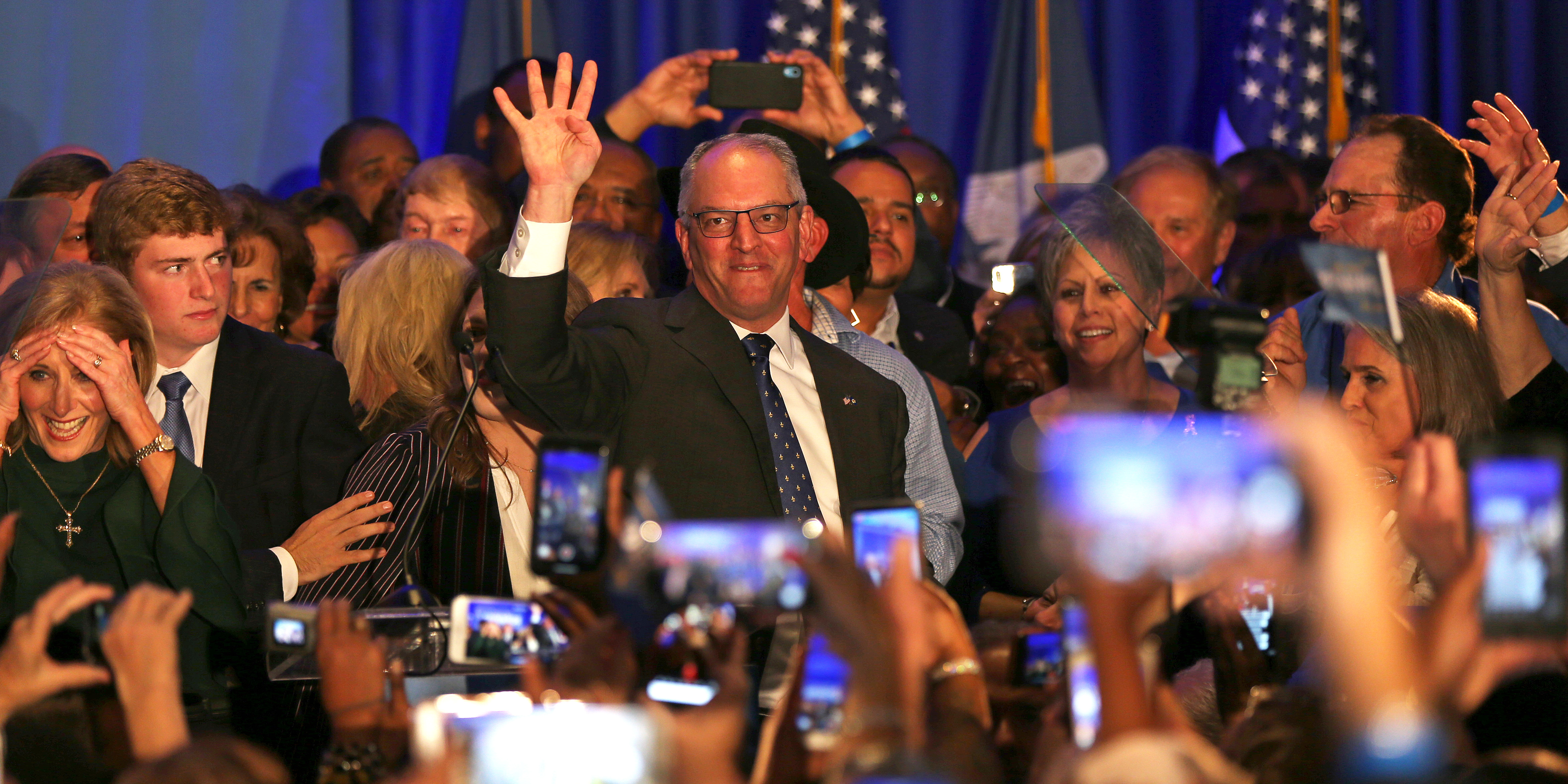- On Saturday, Gov. John Bel Edwards won reelection in Louisiana in a narrow victory over his Republican rival Eddie Rispone.
- Key to the Democratic victory was strong support in traditionally conservative suburban areas, such as Jefferson Parish outside New Orleans.
- The result underlines a growing trend of suburban areas swinging to vote for Democrats, as seen recently in the southern states of Kentucky and Virginia.
- Edwards’ victory came even after President Donald Trump personally campaigned for Rispone.
- Tim Miller, a Republican strategist, told The New York Times that the result was proof Trump was “human repellent spray for suburban voters who have a conservative disposition.”
- Visit Business Insider’s homepage for more stories.
For the second time this month, President Donald Trump failed in a personal bid to lift a Republican candidate to victory in a closely fought gubernatorial race.
Gov. John Bel Edwards, a socially conservative Democrat, won his reelection bid Saturday in the deep-red state of Louisiana, beating his Republican challenger Eddie Rispone with 51% of the vote to 49%.
On November 5, the Democrat Andy Beshear unseated the incumbent Republican in Kentucky’s gubernatorial race.
The results underscore some trends that might worry Republicans ahead of the 2020 US election.
Louisiana Gov. @JohnBelforLA was re-elected over the weekend. For comparison purposes, here is his 2019 win and Sen. Mary Landrieu's 2014 loss by congressional district. Edwards owes his win to the area that sunk Landrieu in 2014: the Baton Rouge suburbs. #LAGov #ElectionTwitter pic.twitter.com/yMlM3RPqMn
— Niles Francis (@NilesGApol) November 18, 2019
They've exposed the limits of Trump's personal capacity to help Republican candidates win, as in both cases the president campaigned hard for the losing GOP candidate.
And they show that support from a key demographic of Republican voters - those living in the suburbs of major cities - may be waning.
Beshear won in Kentucky largely thanks to strong support in suburban areas.
The Associated Press reported that Edwards took nearly 60% of the vote in Jefferson Parish, located just outside New Orleans, compared with only 41% for Hillary Clinton in 2016. While Edwards' vote total closely mirrored Clinton's, the difference was that Rispone got only a little more than half the number of votes Trump did in 2016.
In partly urban and partly suburban east Baton Rouge, Edwards took 66% of the vote, CNN reported. This was a significant increase on the 52% of the vote Clinton won in 2016.
Also key to the victory was strong turnout by black voters in urban areas.
Overall, the results reflect a pattern seen in the 2018 midterms, when Democrats seized back control of the House of Representatives partly by winning suburban areas in states including Pennsylvania and Illinois. Recent further gains for Democrats in Pennsylvania compound the trend.
A shift toward Democrats in the suburbs also defined the early-November state legislature elections in Virginia, in which Democrats claimed control of each of the state's legislative bodies, flipping a series of traditionally Republican seats.

"If you had any doubt that Trump was a human repellent spray for suburban voters who have a conservative disposition, Republicans getting wiped out in the suburbs of New Orleans, Louisville, and Lexington should remove it," Tim Miller, a Republican strategist, told The New York Times.
Though neither Kentucky nor Louisiana is likely to vote for a Democratic president in next year's election, this growing national trend is sure to alarm Republicans, as it could be a key factor in close races in states like Pennsylvania and North Carolina.
"They continue to lose needed support in suburban districts, especially among women and college-educated voters," the Republican strategist Rick Tyler told Fortune in early November.
"That trend, if not reversed, is a death spiral."

